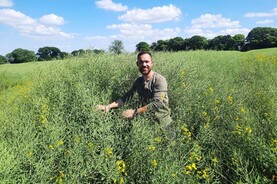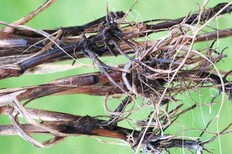There were over 90 information boards and demonstrations on Tuesday this week in Johnstown Castle at the ‘Farming for a better future’ open day.
After the first few boards in the information village it was evident that science is catching up on policy. Unfortunately, for the last 10 years policy has moved ahead of the science, however, Teagasc is making up ground fast.
What did we learn? Carbon measurements modelled on the Johnstown site show that carbon sequestration is six times greater on that site than the international estimates currently used in our greenhouse gas calculations.
Six times greater. Yes, this is only one site. However, it is a long-term study and the flux tower is measuring the ebb and flow from a grass and clover sward that predominates in an Irish farming system.
At the next board, Pat Tuohy explained that recent changes to our understanding of the drainage status of grassland peats has reduced estimated emissions by 5m tonnes, from 9m tonnes to 3.9m tonnes of carbon dioxide equivalent.
This was a direct result of detailed Teagasc analysis, which increased the accuracy of emissions estimates. Indeed, the estimated 9m tonnes of carbon dioxide equivalent is “highly uncertain” according the Teagasc scientists, and all elements are subject to ongoing research.
Let’s be clear and put this 5m tonne clarification or ‘new science’ into context. The total methane emissions of all livestock in Ireland is approximately 13.1m tonnes of carbon dioxide equivalent, so 5m tonnes is close to 40% of that.
Will any other technology, individually or cumulatively, on any of the other 90 Johnstown boards deliver a 5m tonne saving in carbon dioxide equivalent? Probably not.
Are these two studies on their own not enough to signal to the Department and Government to press pause on the nonsensical policy and regulation taking hold in food production as we know it?
Risk
Farmers are sick of taking on the climate change risk, the weather risk and the input hike risk, and as a result they are currently not engaging, not investing and many are preparing to exit.
This great industry we have needs to grab a hold of itself. It needs to take stock. It needs proper transitional support from the Government.
Political ‘trend setting’ incentive schemes from unproven research are wasteful. Current policy is fuelling an exodus and doing nothing for the next generation that we need to foster and promote.
As we clearly saw in Johnstown, the science is ongoing, work is in progress. However, the regulations are here, and now the farmers are checking out of the industry.
The co-ops can’t get the stock numbers quick enough to ascertain what milk is coming in 2025 and 2026. They have a track worn to ICBF wondering how many cows will be in the system.
Farmers are destocking because, given the cost inflation at farm level, the reward for the risk is simply not there. Would you blame them? No.
Our grass-based farming system is being unfairly measured against an inappropriate international barometer. The way it’s currently going, we’ll easily meet emissions regulations in 2030 because economic sustainability has been sidelined.
The value of farmer output hasn’t increased sufficiently to cover the extra costs. Change is happening, but we need more. We see farmers forming producer organisations. We see a growing value to milk pools as milk supply trends downwards. This will initiate change at dairy co-op level.
We see meat factories forming ‘clubs’ of farmers to guarantee meat supply chains. Will producer organisations offer an opportunity? Maybe. Will they allow for processing investment in a tight margin business? Maybe not.
Co-ops
Are co-ops the Irish producer organisations and is it a better option to renew how we manage and elect representatives and at least reduce the local politics and family rivalry? We see co-ops doing deals with fertiliser companies.
Then, in the same region, other fertiliser companies doing deals directly with farmers. Competition drives change.
Yet another Teagasc Open Day this week, providing once again another encyclopaedia of knowledge and information. Unfortunately, this time the farmers didn’t come to hear the messages.
The cost and opportunity of staging these open days is huge. The cost of the Johnstown Castle event on Tuesday wouldn’t stop at €150,000. Take out the industry professionals there and divide that cost over the 300 or so farmers that attended and it’s a staging cost of €500 per farmer.
The opportunity cost of the resources and time spent by advisers and researchers preparing for such events is probably double that again. Teagasc has to revisit the number and frequency of these events. There has been a national event or two every week in July.






 This is a subscriber-only article
This is a subscriber-only article










SHARING OPTIONS: